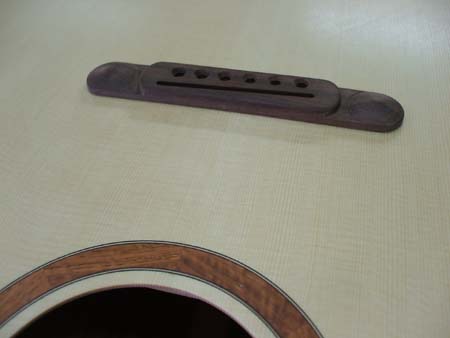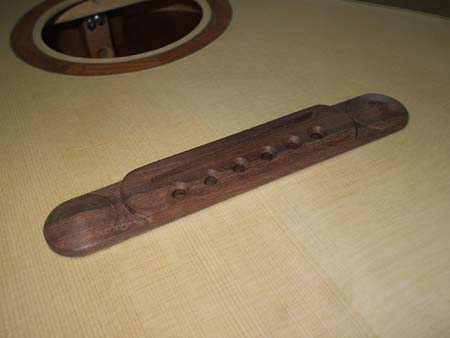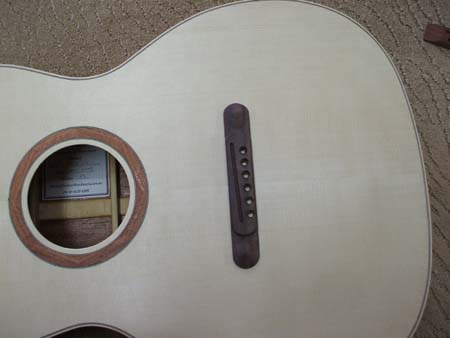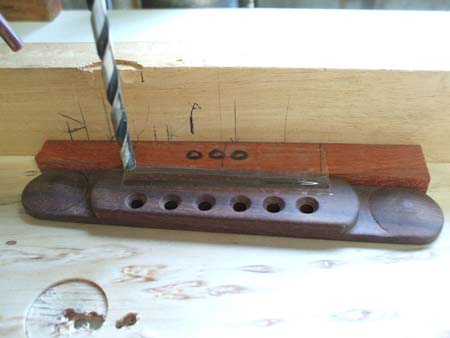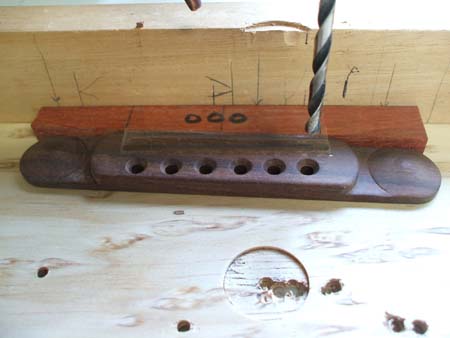Nice looking bridge Michael.
I went through the bridge design need/process several years ago trying to find my own way and design. Back then I was in touch with Scott Van Linge too and he was very generous and helpful to me with this process.
Before I started hacking any wood I made a list of goals for myself that I tried to use to guide my design. Here was my list:
weight: No more than 36 grams in ebony
foot print: A shape that is not difficult to score the finish on a finished guitar to make the bridge fit well. As such I wanted continuous lines as opposed to a foot print shape with lots of peaks and valleys. It's just easier to make fit and less risky too.
Glue lines for the foot print: I wanted a shape that had a decent amount of gluing area but I also had a hunch that since a bridge rocks being anchored over the X-brace that an extended back for the bridge would be more efficient in pulling up the middle of the lower bout making the top more active. Now I have no idea if this is a valid thought but it sounded good to me at the time so my bridge is pretty wide, front to back, as a result.
Copied from something in nature: I am always a fan of nature and the designs that we see in birds, fish, plants etc. It's something that inspires me in my own thinking. After being in touch with Scott and his aversion to bumps and hard edges on braces and bridges I got inspired one night in the summer by the sight of a melting Hershey's kiss chocolate on a cookie...

Seriously - the chocolate was melting and spreading out when it did. Peaks disappeared and the shape became very organic and pleasing, at least to me. And no I was not high....

Anyway after eating the cookie I whipped out a bridge blank, cut out the outline, and stuck 80 grit on my ROS and went to town shaping my new bridge design.
This is what resulted:
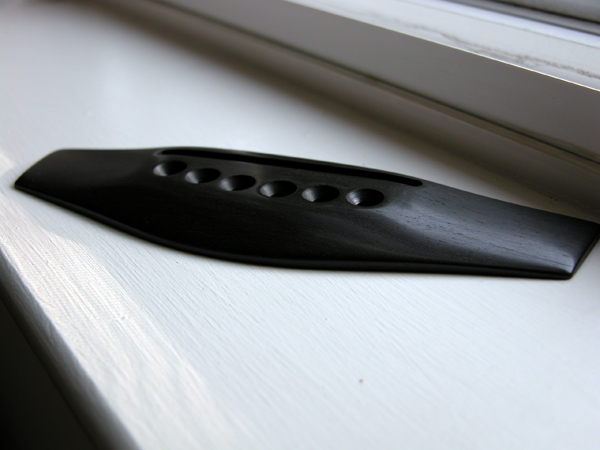
I liked the results a great deal and started to make a few more working on the weight and overall size:
This one is mad rose and came in at around 20 grams, too light for my intended purpose so I made the foot print bigger in search of more mass:
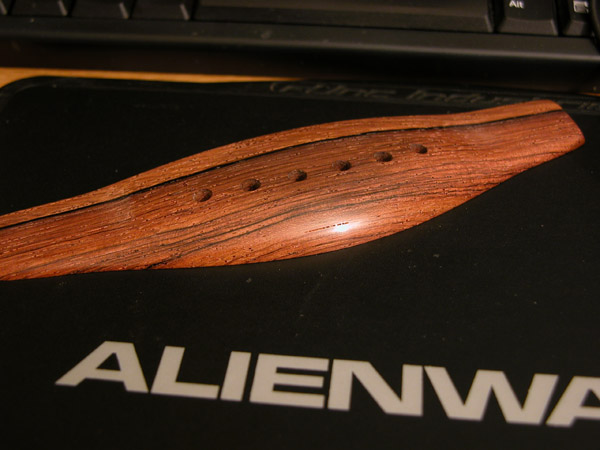
When I had my final shape and size it looked like this:
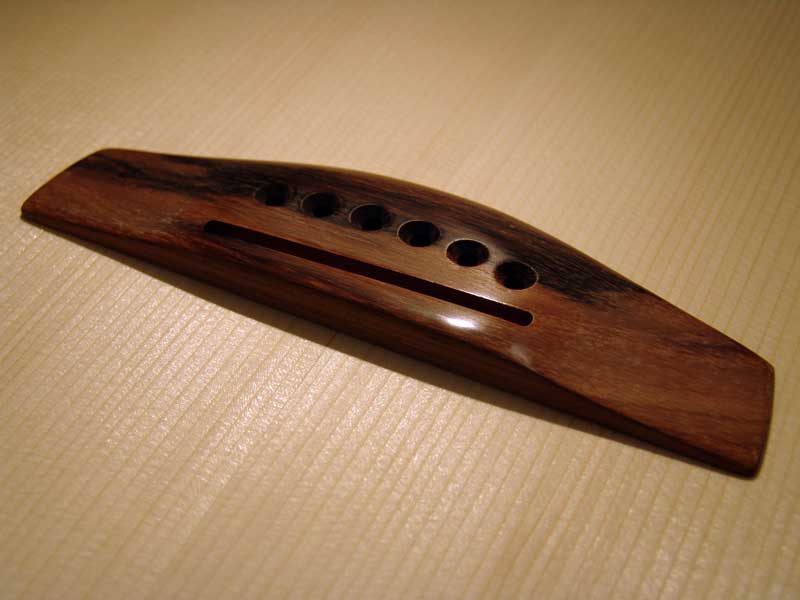
And that is what I use today. The only issue, well not really an issue but something to know when using this bridge was the break angle for some of the strings where the pins are farther back from the saddle. Since I use unslotted pins and slot and ramp my bridges the ramps help with the break angle.
Some other things to consider if I was doing this again is that one bridge does not fit all. Different guitar styles and playing styles may benefit from a lighter or different shaped bridge.
Also the bridge is part of a greater system but the immediate system that the bridge is an important member of is the system of the bridge, top, and bridge plate. Heavier bridges may perform better with lighter weight bridge plates and vice versa. I always think of a bridge as being like one side of a hot dog bun with the plate being the other side of the bun and the top being the hot dog. It's a system and needs to be thought of as a system in my view.
Good thread!
